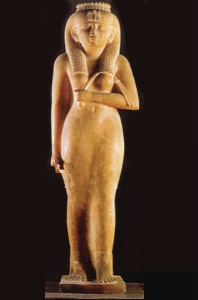Dame Eugenia Charles
The Caribbean's first woman PM, she led Dominica for 15 years
The Guardian, Wednesday 7 September 2005 19.02 EDT
The world first took notice of Dame Mary Eugenia Charles, the Caribbean's first woman prime minister, when she stood shoulder to shoulder with President Reagan in the White House in 1983. As head of the tiny, mountainous island of Dominica, and chairman of the regional Organisation of Eastern Caribbean States, Charles, who has died aged 86, had invited the US to invade neighbouring Grenada after an internal power struggle ended in the murder of the prime minister, Maurice Bishop.
While US marines crushed resistance on Grenada, Charles appeared on television with the US president. For Caribbean radicals, Charles's performance was a betrayal and a further invitation to the US to strut around its backyard. But when "Mamo", as she was known, returned home, Dominicans cheered her cavalcade: the region now had its own iron lady.
She was born in Pointe Michel, a fishing village outside the island's capital, Roseau. Her parents were from humble farming backgrounds, but her much-loved father, a mason who was known as JB and lived to be 107, became a rich landowner with import-export business interests. Dominica was then a British colony, a stratified and parochial society based on class and shades of colour; Eugenia's family fitted into the conservative "coloured bourgeoisie".
It was an old-fashioned, unostentatious, godfearing background, qualities that Eugenia herself espoused. She worked hard at the Convent, the island's only secondary school for girls. Her father suggested she learn shorthand, which she practised by attending the local magistrates' court. There, she became interested in the law - a familiar route into the Caribbean middle classes and thereafter, often, into politics. After university in Toronto, she went to the London School of Economics, was called to the bar and returned home in 1949. The first Dominican woman to become a lawyer, she set up a successful chambers in Roseau, specialising in property law.
Her political career was still nearly 20 years off. Although she was sometimes dismissively accused of a neo-colonial mentality, she had had no time for the low-calibre colonial servants who were sent to administer her island, and fought her corner with characteristic aplomb. Her experiences of racism in North America and Britain also left their mark.
She was drawn into politics in the 1960s to counter what she saw as the dangerous activities of the ruling party - by this time Dominica was self-governing, achieving independence in 1978 - who were planning what became known as the "shut your mouth" bill to silence criticism and outlaw the opposition. In 1968, with broad political support, she helped form the Dominica Freedom Party (DFP): and she entered the House of Assembly as a nominated member after the 1970 election. She became an MP for the DFP in 1975 and spent the 1970s in opposition, using her legal training to good effect in parliament where she weathered the personal attacks - the mepuis - with much dignity, often calling the ruling party's bluff. When a dress code act was introduced by Prime Minister Patrick John, Charles attended parliament in a bathing costume to draw attention to the government's absurd posturings.
An isolated woman in politics, she faced up heroically to opponents who abused her because she was unmarried and childless. Despite this, she never really identified with feminist issues or gave Caribbean women, who carry many burdens, particular consideration.
The DFP's first electoral victory in 1980 swept the board and brought her the premiership. Her steadfastness and probity came as a welcome relief to an island that had been thrown into turmoil both by political excess and corruption and by the ravages of Hurricane David in 1979, which had destroyed Dominica's fragile infrastructure. Even her critics agreed that, thanks to Mamo, Dominicans had regained their self-respect.
During the early days of her rule, she survived various attempted coups - one orchestrated by Patrick John with, bizarrely, the help of Ku Klux Klan mercenaries - and did not flinch. Once she calmly locked the door to her office and walked out by the back entrance while members of the Defence Force, which she later disbanded, came for her up the front stairs.
Her years in power found a swing to conservatism among Caribbean politicians, with whom she found common calling. She was a leading proponent of Caribbean unity, which made faltering progress during the 1990s. Internationally, too, her reputation was high: politicians and officials found her manner refreshingly forthright. What she said in her deep bass voice was always to the point. She was an effective lobbyist, trawling the globe for aid to sustain Dominica's banana-dependent economy: thanks to her hard work, impoverished Dominica had the best roads in the English-speaking Caribbean and living standards improved. A plinth on the grandly named Dame Mary Eugenia Charles Boulevard, in effect Roseau's promenade, bears the words: "Thank God, the British were here."
But as her rule went into its second decade, she lost favour at home, scraping back into her third term with a one-seat majority. Her fearlessness - a much-needed quality in difficult days - turned into a certain arrogance in more peaceful times and a refusal to listen to the grassroots. Her emphasis on "concrete and current" (roads and electricity) development, in tune with the structural adjustment programmes enforced by the US at the expense of social welfare and jobs, diminished her popularity.
She had also done little to break down the stratified colour-consciousness of the island. As one Dominican calypsonian put it, describing her days in power: "Instead of salvation we were enslaved by the bourgeoisie." She ruled the island in the manner of a head teacher of a staid girls' school, where good manners, hard work and godliness counted for more than vision, experiment and community. Many loved her, but these did not include the poor nor the intellectuals - she enjoyed Mills & Boon novels, which she would exchange with her coterie of women friends.
Yet she was rarely stuffy, never encouraged the notion of a cult of personality and had little time for what she saw as Mrs Thatcher's affectations. During her years in office, she would see constituents and visitors in her modest office or on the sweeping verandah of her family home, Wall House. There she would sit in a battered wooden chair, her shoes kicked off, watching a miniature TV set and eating chunks of sugarcane. It was a tribute to Dame Eugenia - as she became in 1991 - that outside just a single bored and sleepy policeman stood guard.
After retiring from government in 1995, she became involved in President Jimmy Carter's election monitoring organisation, the Carter Centre, undertook speaking engagements, largely in the US, but mainly, as her memory faded, stayed at home, in a flat overlooking one of Roseau's main shopping streets, chastising ("they're all bloody fools") her successors as they toiled in a less rewarding economic atmosphere to carry on her prudently conservative politics.
· Mary Eugenia Charles, politician, born May 15 1919; died September 6 2005

















